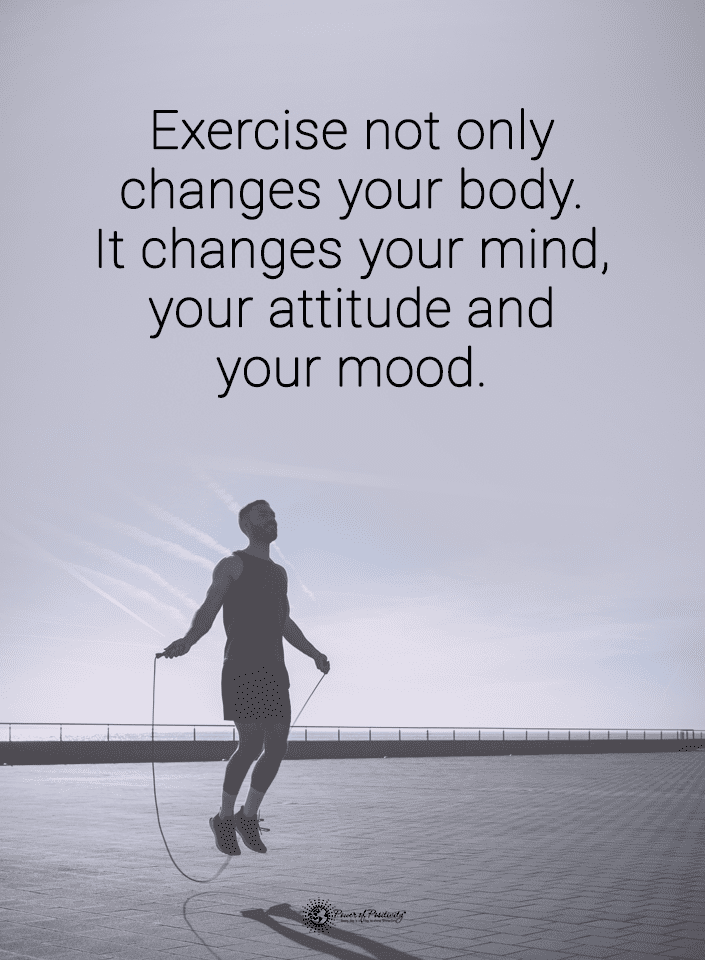Positivity, optimistic thinking, and mindfulness are all the rage in wellness communities and circles. Yet, simultaneously, we’ve grown farther and farther away from the natural world, becoming increasingly cooped up in concrete jungles or indoors, within the creature comforts of our homes and electronic devices.
Ironically, these two trends may be entirely at odds. The secret to positivity doesn’t lie in another wellness course or instructional videos on living your best life – though they can help, too! Instead, the secret may have been right before us the whole time, something we’ve drifted away from despite its benefits: nature.
Nature has a reputation for being one of the best healers known to the world. This isn’t an undeserved reputation. On the contrary, spending time in nature will likely make you happier and healthier overall. Here’s how nature improves positivity in six ways.
1. Nature Makes You Feel Awe and Positivity
When was the last time you truly felt awed by something? While it sounds simple, few positive emotions are more powerful than the incredible experience of awe. Though it seems relatively unimportant, it significantly affects positivity and can improve your mental health and well-being.
Studies show that looking at nature, specifically tall trees in a forested area, can produce incredibly optimistic emotions. Awe then improves positivity by:
- Providing energy and motivation
- Attuning you to the world around you
- Granting understanding into the vastness of the world
- Increasing desire for healthy social interaction
- Improving prosocial behavior and relationships
- Boosting physical health by reducing inflammation
- Providing a sense of purpose
- Encouraging better goal-making and direction
- Promoting generosity and altruism
- Reducing entitled or selfish traits
Few can deny that awe is a trait of positivity, emotion, and experience only brought on by feeling good things. The fact that just being in nature can inspire such feelings
2. It Lowers Stress
Stress is a common part of life, and it’s impossible to avoid it completely. That’s why stress-management techniques are so necessary to ensure continual positivity. You cannot stay optimistic if you’re focused on how stressed out you feel.
There are, of course, plenty of ways to find positive thinking and manage stress. But one great way to do this is by spending some time in nature. A study has shown that individuals who are in a natural environment experience benefits to their stress levels, such as:
- Reduced heart rates
- More balanced pulse speeds
- Lowered stress scores on tests
- Improved positivity and frequency of positive thoughts
- Faster recovery from various stressful events and circumstances
- Generally improved mental health and wellbeing
An additional factor here is that those struggling with mental health often sink into negative thoughts and play into a strong inner critic. This can contribute to rumination, a big symptom of anxiety and depression. Essentially, it means getting stuck in your thoughts unproductively. According to research, spending just about one and a half hours taking a nice walk in nature can reduce the chances of you ruminating later in the day.
3. It Improves Sleep
Sleep is essential to your overall well-being from a mental and physical perspective. For example, have you ever noticed how grumpy and irritable you get when you don’t sleep enough? It makes sense that positivity often relies on getting the right amount of sleep.
But plenty of people have problems falling and staying asleep. Insomnia, anxiety, and stress can influence your ability to drift off each night. There are plenty of ways to manage those things, but that’s not what we’re here to talk about. Instead, we’re here to discuss nature, which research says is incredibly beneficial to sleep quality.
This is because you expend energy when you spend time in nature while also reducing stress, which helps you get better rest. Nature also has properties that allow you to enjoy the best of sleep’s naturally healing effects. Besides, studies show that a lack of sleep – or abnormal sleep patterns in general – is the first sign of a mental health disorder, especially mood disorders like depression.
4. It Makes You Become Optimistic About Exercise
It’s tough to get the motivation to work out or get moving if it’s not something you naturally enjoy. But being out in nature can be an incredible way to gain the drive to move around a little. Unfortunately, people often think that the only good way to exercise is through a rigorous, strict regimen at the gym. Still, a little physical activity can do wonders for your mental health, improving your positivity significantly.
You’ll feel encouraged to move around and study when you’re in nature. This is because:
- Nature allows for more interesting forms of physical activity that are more enjoyable and interesting
- It provides more opportunities for positive socialization, as you’re able to form groups with those who also enjoy exercising in nature
- Nature offers a nice break from stuffy gyms that can feel oppressive or overwhelming
- Exercise in nature is often less severely strenuous, which in turn encourages you to work out with heightened intensity without as much exertion
But what, exactly, are the links between exercise and positivity and exercise. You’ve probably heard repeatedly that you can overcome even the worst moods by working out, but how much of that is scientifically backed? As it turns out, the answer is a little more complex. Here’s what we know for sure about these links:
- When you exercise, the hormones in your body change – more feel-good hormones are released, and stress hormones are either decreased or balanced out by the aforementioned feel-good ones.
- Exercise can release tension, other stressors, and negative emotions, allowing you to expend the worst of the heat of the moment through movement.
- Exercise can also distract from the subjects of the aforementioned stressors and emotions.
- As a coping mechanism, exercise is one of the best options, boosting your sense of control, improving resilience, and even increasing your self-esteem to better cope with problems without exercise’s aid later on.
- Exercise can be inspiring. When you complete an exercise session, you learn how amazing it feels to accomplish something, and you’ll feel more encouraged to set and achieve goals.
- Regular exercise is a fantastic sleep aid; we already know that better sleep improves an optimistic outlook.
- Exercise helps to relax you on both a physical and psychological level.
- When you have trauma, exercise can slowly teach your mind and body to become “unstuck” from typical post-traumatic stress, especially when used in conjunction with other forms of professional treatment.
- Exercise can also sharpen your mind, which helps you to think and see more clearly, so you aren’t bogged down by anxiety and illogical worries.
5. It Can Enhance You Spiritually by Boosting Positivity
You may roll your eyes at being spiritually enhanced, but this is surprisingly more feasible than you think. Spirituality doesn’t have to be tied to religion, astrology, or stereotypical spiritual practices. It just means that your spirit and soul are in tune with your mind and body, allowing you to make decisions that serve the deepest parts of yourself.
Studies state that when you spend time in nature, you better appreciate the world around you. This means you:
- Become more connected to your senses and mindfully exist more closely with the world
- Feel inspired to impact the world in more notable and purposeful ways
- Realize you are part of a bigger picture and that it’s not all about you
- Better understand your place in the universe or what you want that place to be
- Realize your problems are minor in the grand scheme of things, which gives you an optimistic view of them
- Gain hope for the future
- Are more social, grateful, optimistic, and altruistic
Many negative people are not in touch with their spiritual sides. They may even see being spiritually connected to themselves as embarrassing or silly. But by embracing nature, you may realize just how important spirituality is to your positivity and happiness.
6. It Helps You Breathe
People often fear the air pollution that exists in the world outside, but did you know that the concentrations of air pollution indoors are often much worse than they are outside? Specifically, this can happen between two and five times worse, which is even more extreme when comparing your city home indoors to relaxing natural outdoor spaces.
According to studies, individuals who spend more time outside, specifically in their local green areas, are less likely to experience severe or fatal respiratory conditions in their old age. This shows how good outdoor activity can be for your lungs and breathing, especially in nature.
Choosing places with high air circulation and minimal pollution is crucial, but for the most part, you can expect to reap these benefits anywhere in nature. Deep breathing and even more precise, healthier breathing can reduce stress and increase positivity throughout the day.
Research indicates that the human brain associates different breathing patterns with different emotions. You experience steady, deep, and regular breathing when feeling positive. When you’re feeling negative, from anxiety, stress, anger, or anything else, you experience shallower and quicker breaths. By relaxing your breathing through the wonders of nature, your brain calms down, sending optimistic signals to the rest of your body.
You can further encourage the benefits of breathing for positivity by doing breathing exercises when you’re out in nature. Of course, there are plenty of breathing activities that you can follow through videos online, but even just mindfully slowing down your breathing by counting your breaths in and out can work wonders.
Final Thoughts On Some Ways Nature Improves Positivity
Nature is powerful, and it’s unwise to forget about the lush greenery and the natural world that humans once intrinsically interlinked with. You can increase positivity in your life and mind by spending more time in natural spaces, whether parks, forest reserves, or greenhouses and gardens.




















